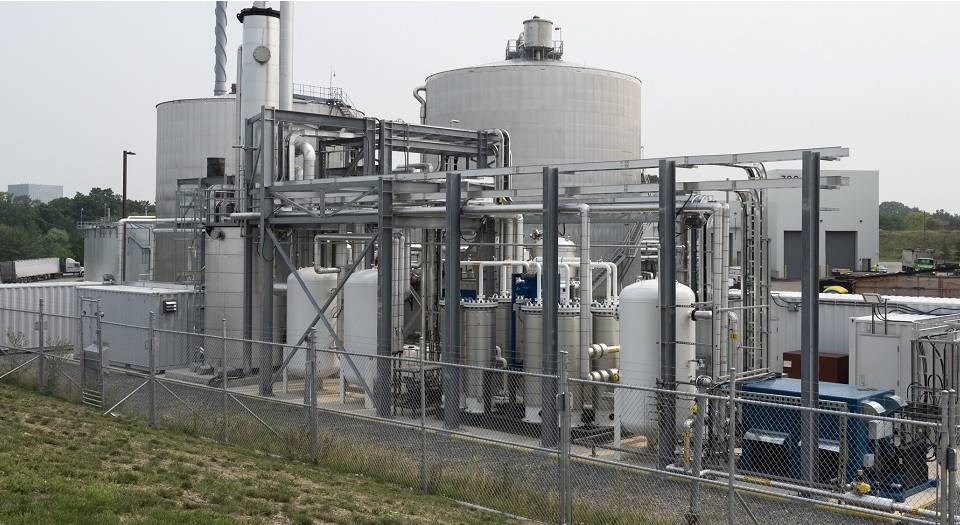For many municipalities looking to reduce their greenhouse gas emissions (GHG) while also curtailing the waste they generate, renewable natural gas (RNG) is becoming a promising solution.
RNG is the gas that’s naturally created from the breakdown of organic waste, which typically comes from four sources: food processing, agriculture, biosolids from wastewater treatment plants, and municipal organics.
After being captured and purified, that gas is then transported via pipeline and put to work by end users to generate electricity, heat facilities, power fleet vehicles, and more.
The beauty of RNG versus a traditional natural gas is that it doesn’t generate a carbon footprint, noted John Loncar, a specialist in RNG and business development with Enbridge.
“RNG is carbon-neutral or, actually, carbon-negative,” Loncar said. “We’re actually capturing this valuable asset of methane and putting it to useful work.”
Loncar spoke during a Nov. 29 lunchtime webinar hosted by the Ontario Sustainable Energy Association in which industry experts, municipal stakeholders and market analysts discussed the merits of RNG for municipalities in helping to reduce waste, power their assets and, in some cases, generate revenue.
As a national energy provider, Enbridge is partnering with communities across the country on various RNG projects, which bring multiple benefits.
It’s competitive, cost-wise, in comparison to electricity, which can help businesses keep their operational costs in check, and it can also aid companies in meeting their GHG reduction targets, Loncar said.
No new infrastructure is required — RNG can be transported via existing pipelines — and it’s “resilient,” Loncar said.
“We continue to produce waste, which therefore is energy,” he said.
The City of Toronto is one of Enbridge’s partners. At its Dufferin Organics Processing Facility, one of four potential RNG sites the city identified in a feasibility study, RNG is produced 24 hours a day, seven days a week.
Currently in the process of being fully commissioned, the facility is expected to generate about 3.3 million cubic metres of RNG annually, which will then be used to fuel the city’s waste collection truck fleet.
Shelbi Fallis, a policy planning and project consultant who works on Toronto’s Dufferin project, noted that the city actually produces more waste material than it’s able to process.
Toronto generates 175,000 tonnes of waste annually, but can only process 130,000 tonnes. The excess, she noted, is collected and processed through a third-party contractor.
“So, the city is fortunate enough to know, based on that, that we can guarantee our feedstock,” Fallis said. “And our material production curve is actually estimated to only increase from here.”
The city’s efforts to increase waste diversion rates are ongoing, and as more organic waste can be diverted, it strengthens the business case for creating additional RNG facilities through the city, she said.
Mike Fletcher, project manager of building engineering and energy management with the City of Ottawa, encouraged municipalities thinking of getting into RNG generation to have a solid energy and emissions plan that takes into account all aspects of a gas-generation operation.
With a goal of making its operations net-zero by 2030, Ottawa looked at multiple options before settling on RNG as the most viable, Fletcher noted. In choosing its wastewater treatment plant as a viable site for an RNG operation, the city looked at potential feedstock, new technologies, and end uses for the biogas.
“That study was very useful, because it laid out potential projects on a multi-year timeline and gives us an idea of what’s best,” he said.
Next, the city will undertake a feasibility study so it can “future-proof” its RNG project, he added.
With new technologies coming online all the time, any plan Ottawa comes up with will have to account for current and future uses.
“We only want to make investments once — and we’ll be lucky to get the capital to make the investment once — so there has to be a framework of thinking,” Fletcher said.
Toronto’s southern neighbour, Hamilton, is still in the early stages of its RNG plan.
Angela Storey, the city’s director of waste management, said Hamilton already operates one bus that’s fuelled by RNG, in partnership with Enbridge, but it would like to run its entire fleet on RNG.
“Our goal in the Public Works Department would be to be able to have a program where our waste was the feedstock for our buses,” Storey said. “We’re just getting started on that process.”
Key to making any kind of RNG project work is getting resident buy-in, she noted, and that means lots of education, outreach and awareness activities with the public.
Hamilton’s one operating landfill is located in a rural area in the southeast part of the city, but residential properties are close enough that the city does get complaints about odours from time to time, and regularly engages with residents to maintain an open and transparent relationship with them.
If the city were to add an RNG operation to the mix, Storey said, it would have to take into account additional odours or noise associated with the shredding of material and how it would impact residents of the area.
“What we have definitely learned here in Hamilton — I’m sure it’s the same everywhere else — is to start engagement early, whether it’s with subject matter experts, whether it’s with the radius of properties around…,” Storey said. “So we would definitely want to include more people in updating them on what our plans are and what’s going on.”




